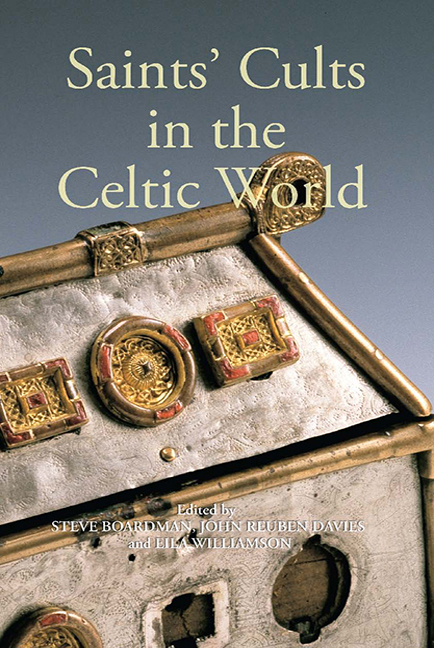Book contents
- Frontmatter
- Contents
- List of Illustrations
- List of Contributors
- Abbreviations
- Editors’ Preface
- 1 Rochester, Hexham and Cennrígmonaid: the movements of St Andrew in Britain, 604–747
- 2 The cults of Saints Patrick and Palladius in early medieval Scotland
- 3 Personal names and the cult of Patrick in eleventh-century Strathclyde and Northumbria
- 4 Bishop Kentigern among the Britons
- 5 Adjacent saints’ dedications and early Celtic History
- 6 Cuthbert the cross-border saint in the twelfth century
- 7 David of Scotland: ‘Vir tam necessarius mundo’
- 8 The cult of Saint George in Scotland
- 9 The cult of the Three Kings of Cologne in Scotland
- 10 The medieval and early modern cult of St Brendan
- General Index
- Miscellaneous Endmatter
10 - The medieval and early modern cult of St Brendan
Published online by Cambridge University Press: 11 May 2017
- Frontmatter
- Contents
- List of Illustrations
- List of Contributors
- Abbreviations
- Editors’ Preface
- 1 Rochester, Hexham and Cennrígmonaid: the movements of St Andrew in Britain, 604–747
- 2 The cults of Saints Patrick and Palladius in early medieval Scotland
- 3 Personal names and the cult of Patrick in eleventh-century Strathclyde and Northumbria
- 4 Bishop Kentigern among the Britons
- 5 Adjacent saints’ dedications and early Celtic History
- 6 Cuthbert the cross-border saint in the twelfth century
- 7 David of Scotland: ‘Vir tam necessarius mundo’
- 8 The cult of Saint George in Scotland
- 9 The cult of the Three Kings of Cologne in Scotland
- 10 The medieval and early modern cult of St Brendan
- General Index
- Miscellaneous Endmatter
Summary
In early Irish tradition St Brendan (feast day 16 May) is ranked among the ‘twelve apostles of Ireland’ (dá apstol decc na hÉrenn), the generation of sixth-century Irish monastic founders who followed St Finnian of Clonard. St Brendan is also immortalised as the most famous voyager to the legendary ‘Promised Land of the Saints’. Dedications to St Brendan, as we will see, are found throughout the medieval Celtic world, including Brittany, and on a more limited basis in England, while outliers of his cult in the middle ages are found as far away as the Faroe Islands and possibly north-east Germany. Brief surveys of the extent of his cult were made by John O'Hanlon in 1875, and by Sabine Baring-Gould and John Fisher in 1907, but these pioneers – whose fieldwork remains indispensable – saw the journeys of the saint himself as an explanation for the distribution of his cult, whereas we would now assume that the distribution of a cult has many causes and chronological strata. St Brendan became a popular symbol for the travels of Irish clergy and religious and remains so into the modern era. The wide circulation of the ninth-century tale Nauigatio Sancti Brendani abbatis (henceforth Nauigatio), especially in the high middle ages, encouraged a process by which both existing dedications and suggestively similar toponyms were drawn into the cult, no doubt in a similar process to many early Irish cults, if perhaps on a greater scale. Brendan's cult is one amongst a number of international cults of Irish saints that are case studies of how the cult on the ground is subject to more than one process of promulgation. These processes can be separated and include: travels of individual persons, travels of groups, travels of texts, and philological convergence. What Gwenaël Le Duc has said about the cult in Brittany holds true for the cult as a whole: ‘the story is rather detailed than complicated’.
The dossier of St Brendan
The dossier of an insular saint typically centres on co-ordinates such as a known feast day, resting-place, miracles and genealogy. St Brendan is recorded as being the son of Findlug of the Munster sept of Altraige. St Brendan's feast day appears in the ninth-century martyrologies as 16 May. His resting-place is recorded in hagiography as Clonfert, Co. Galway (see below).
- Type
- Chapter
- Information
- Saints' Cults in the Celtic World , pp. 180 - 204Publisher: Boydell & BrewerPrint publication year: 2009



